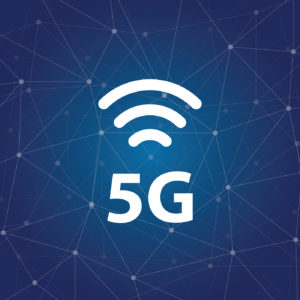Deploying 5G wireless speeds 10 to 100 times faster than 4G will cost $130 to $150 billion in fiber optic cabling alone over the next 5 to 7 years.
That’s according to a Deloitte study that found massive investment in fiber infrastructure will be required for the United States to reach its 5G potential.
“5G relies heavily on fiber and will likely fall far short of its potential unless the United States significantly increases its deep fiber investments,” the study reads. “Increased speed and capacity from 5G will rely on higher radio frequencies and greater network densification (i.e., increasing the number and concentration of cell sites and access points).”
That’s because 5G networks will make use of much higher frequency airwaves than current networks. New technologies including high-frequency millimeter wave bands and small cell networks will allow carriers to make use of the bands. They boast more than five times the space of lower bands used in 4G LTE.
While typical low-band spectrum used in contemporary networks is 5 to 10 MHz in width, 5G blocks will be more like 200 MHz across, and provide for more and faster backhaul carrying internet data to cell towers.
But those high-band signals are also weaker. Harnessing them requires small cell networks with smaller cell sites for bouncing and capturing the high-frequency millimeter waves harnessed in the upper bands, which have a difficult time moving through objects like the walls of a building.
To illustrate how crucial fiber is, Deloitte reports 90 percent of all internet traffic travels over wireline fiber, even if it ultimately terminates on a wireless device.
While the investment predicted by Deloitte is steep, the payoffs are big. Engineers and regulators predict 5G will increase download speeds from the current average of 10 to 20 Megabits per second to 100 Mbps to 1 Gigabit, drastically boosting download speeds for streaming high definition 4K video and enabling new tech like VR. Those speeds will be essential for deploying new technologies including autonomous vehicles like self-driving cars and smart-city energy grid and water systems.
Withholding that investment could be even more costly, according to the study. Falling short of fiber deployment will not only impede the deployment of 5G, it’ll mean a dwindling number of broadband provider choices for Americans the “widening of the digital divide.”
The divide is already significant. According to Deloitte’s figures, fiber passes less than one third of homes in the U.S., and only 39 percent of consumers have access to more than one broadband provider of 25 Mbps service — the minimum speed definition of broadband according to the Federal Communications Commission.
Only 38 percent of homes have a choice of two providers offering the same speeds, and just 61 percent of the population in rural communities. Even when speeds of 25 Mbps are available to rural customers, they can pay up to three times as much as suburban customers for the same speeds.
Approximately 10 million rural homes and 3 million urban and suburban homes can’t get broadband speeds at all.
Regulators at the FCC and lawmakers in Congress have offered up numerous recent proposals and rulemakings to incentivize broadband investment, but regulation won’t be enough according to the study, which encourages telecommunications providers and the businesses that rely on them to get creative.
As the average number of internet-connected devices in each home grows (with affluent households having up to 500 by 2022), Deloitte suggests broadband providers offer services to integrate and secure a network of household devices as a means of bringing in additional revenue for fiber deployment.
They also suggest over-the-top players like Netflix or Google-YouTube form partnerships with internet service providers to fund the build-out of networks they could partially own. Such services equally rely on growing bandwidth and benefit from faster speeds.
Lastly, the firm suggests letting carriers lease fiber as real estate to incentivize non-traditional investors to bring their assets to fiber.

